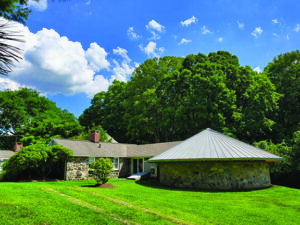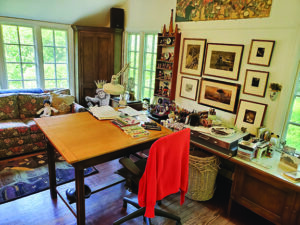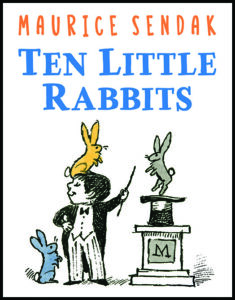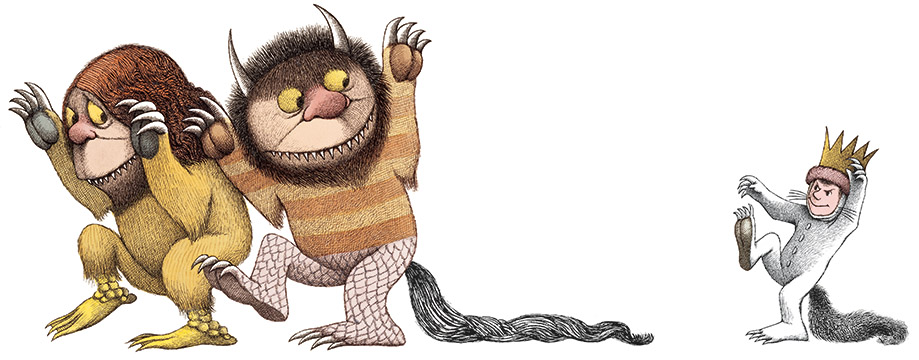In an exciting turn of events, many of the cherished works of Maurice Sendak that were once stored elsewhere have found their way back home to Ridgefield where the artist spent most of his adult life. Sendak, the renowned illustrator and author behind beloved classics like Where the Wild Things Are, In the Night Kitchen and Outside Over There died in 2012 at the age of 83 leaving his faithful friend and assistant, Lynn Caponera, in charge of keeping his vast collection safe and his legacy alive.



Sendak’s estate included an impressive collection of approximately 20,000 works, including books, stage designs, costumes, and original illustrations. He was an avid collector and also amassed a treasure trove of artwork and memorabilia, much of which inspired his own art. During a career that spanned over sixty years, Sendak received many awards including the Hans Christian Anderson award, the Caldecott Medal, and the National Medal of the Arts, more than any other picture book artist has received.
Much as Caponera tried to pry out Sendak’s specific wishes for his artwork and collections while he was alive, he would always tell her, “You’ll know what to do.” Sendak was so confident in Caponera that he made her executor of his estate. After he died, despite the daunting task ahead of them, the Maurice Sendak Foundation, with Caponera at the helm as Executive Director and President of its Board, rolled up their sleeves and dug into the monumental job of organizing, sorting, cataloging, and preserving.
 At first glance, Caponera is a laid back no worries kind of person who in the early days after Sendak passed was sometimes criticized as being too inexperienced to handle the massive estate and the responsibilities that went with protecting it. Caponera pretty much blew that theory out of the water right from the get-go. Plans were almost immediately underway to build a 1,500-foot archive on the property which would safe-guard Sendak’s work. Early on she helped create an exploratory team to investigate the feasibility of having a museum in Ridgefield.
At first glance, Caponera is a laid back no worries kind of person who in the early days after Sendak passed was sometimes criticized as being too inexperienced to handle the massive estate and the responsibilities that went with protecting it. Caponera pretty much blew that theory out of the water right from the get-go. Plans were almost immediately underway to build a 1,500-foot archive on the property which would safe-guard Sendak’s work. Early on she helped create an exploratory team to investigate the feasibility of having a museum in Ridgefield.
Along with other equally committed foundation members, she began the arduous task of cataloging all Sendak’s works; releasing both published and unpublished books; arranging for Sendak’s artist fellowships to continue; and partnering with the University of Connecticut (UCONN) to temporarily house and maintain the finished artwork for his published books and certain manuscripts, sketches, and other related materials. All Sendak’s creations including those eventually returned from UCONN now live fully protected in the Archive Center or a high-tiered art storage facility in Ridgefield.
“Having everything at UCONN gave us time to decide what to do,” says Caponera, who was grateful for the partnership.
The Ridgefield museum idea did not pan out. It wasn’t the right time, and the proposed building came with too many challenges for protecting the artwork. Instead, the foundation focused on the things they could achieve, like releasing his unpublished works. In February 2024, Ten Little Rabbits (Harper Collins), a previously unpublished counting book for young children that Sendak had created in tiny form for a fundraiser, will be released both as a hard cover and a toddler friendly board book. This is just one of a number of books published that require time and care to protect the artist’s intention and style while still fixing flaws that might occur when they are translated into different formats.
Wild Things Are Happening, a touring museum curated by Jonathan Weinberg, an artist and Curator of The Maurice Sendak Foundation, stands as one of the foundation’s recent triumphs. Weinberg has skillfully edited a captivating catalogue that resembles a coffee table book, brimming with moving anecdotes from friends and colleagues, along with reflections from the artist himself. The international touring museum, which recently completed a popular run at the Columbus Museum of Art in March 2023, marks the first extensive retrospective of Sendak’s work since his passing and encompasses a remarkable collection of over 150 items. Among these objects are sketches, storyboards, and paintings by Sendak, offering a comprehensive representation of his prolific career. As mentioned in the book, “The Maurice Sendak Foundation owns most of Sendak’s major works including the original paintings and sketches for his books as well as designs for many of his opera, theatre, film and television productions.” Both the catalogue and the retrospective exhibition share the title Wild Things Are Happening and they provide profound insight into Sendak’s artistic development and the influence of other artists on his creations.
 Another core program of The Maurice Sendak Foundation is a yearly four-week residency “that encourages, teaches and supports artists who tell stories with illustration.” During his lifetime, Sendak was a mentor to many promising illustrators and began the program two years before he died. The program was halted during the pandemic and then in the past two years reinstated at Caponera’s farm in upstate New York and most recently in the Catskills. She would like to bring it back to Ridgefield, especially now that Sendak’s creations make their home here.
Another core program of The Maurice Sendak Foundation is a yearly four-week residency “that encourages, teaches and supports artists who tell stories with illustration.” During his lifetime, Sendak was a mentor to many promising illustrators and began the program two years before he died. The program was halted during the pandemic and then in the past two years reinstated at Caponera’s farm in upstate New York and most recently in the Catskills. She would like to bring it back to Ridgefield, especially now that Sendak’s creations make their home here.
Caponera would also like to revisit the idea of a Sendak Museum here, something she is confident the artist would have approved of because he “loved to show off his house and things.” The house is just as Sendak left it. Each item, no matter how small is right where he placed it. There may be a few less Mickey Mouse characters – his original collection amounted to about 10,000. The gardens have been significantly enhanced to reflect the plantings found in his books, but his signature sweater is still draped over his chair, his slippers sit under the desk and with his simple brushes and paints laid out, it looks like he’ll return from one of his daily walks at any moment. It would be an ideal museum for people to get a true glimpse into Sendak’s world.
As she contemplates the viability of
all the projects on the agenda,
there is one final job that only Caponera can do herself. “I know every story behind every piece of memorabilia, trinket, photo. It’s time, she says, to write them
all down. •
